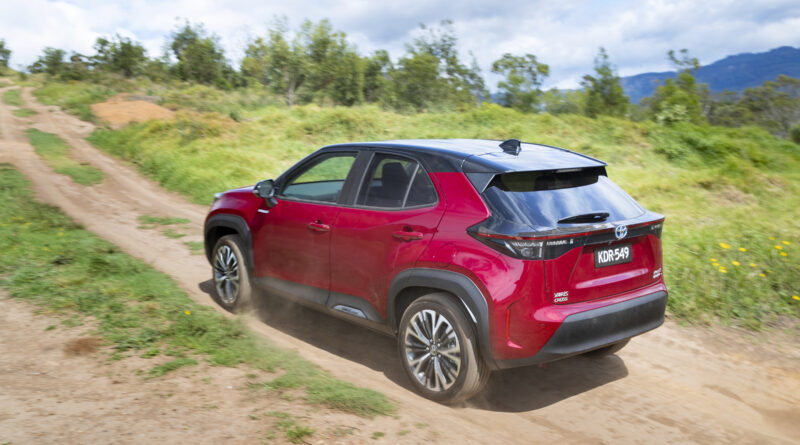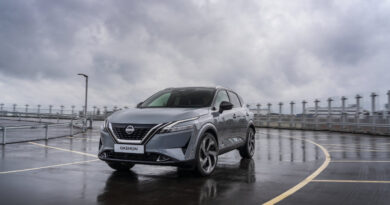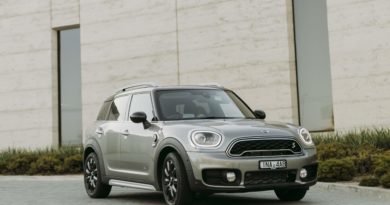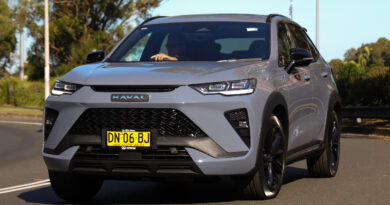Toyota Yaris Cross Hybrid review
There’s seemingly no such thing as overdoing it when it comes to SUVs in Australia in 2020.
Take Toyota: It has just unleashed its seventh SUV, the Yaris Cross.
As the name suggests, the new small SUV borrows plenty from the Toyota Yaris, including engines, interior and its core architecture.
Want the latest electric car news and reviews delivered to your inbox? Subscribe to our weekly newsletter!
But the Yaris Cross has a larger body compared with the garden variety Yaris. It also gets black highlights for the requisite tougher SUV look. Other key differences include an electric button-operated park brake in lieu of a traditional handbrake and rear disc brakes rather than drums.
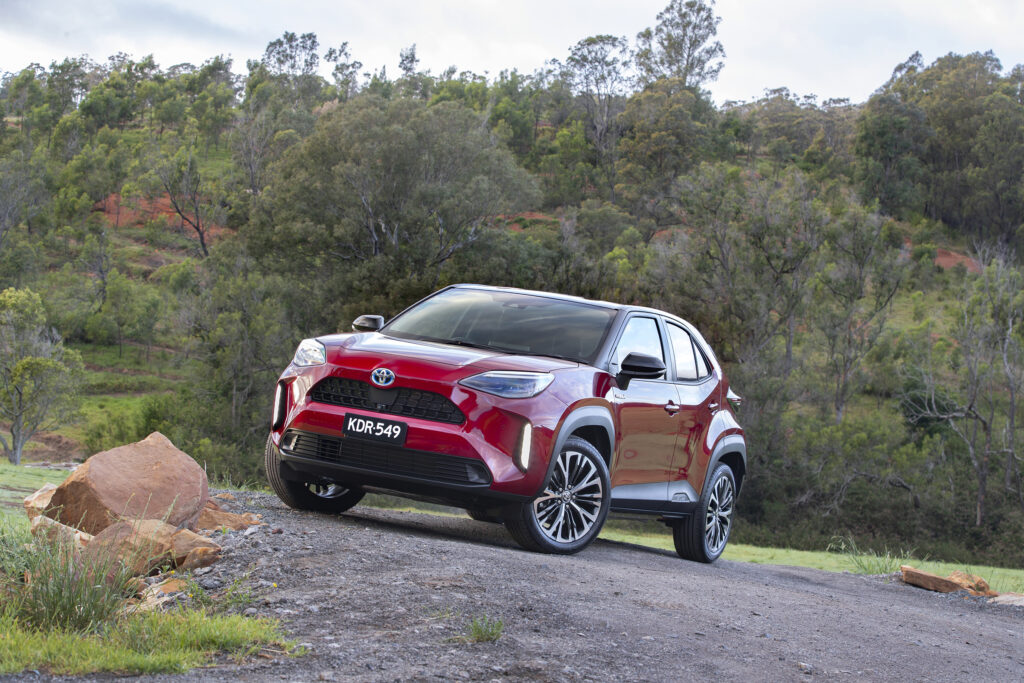
The Yaris Cross is the most affordable Toyota SUV and comes with the choice of petrol or hybrid propulsion. Rather than a plug-in hybrid system, the Yaris Cross uses a regular hybrid setup.
The Yaris Cross sits beneath the C-HR, which sits below the RAV4.
Like those two it’s available as both a front-wheel drive or all-wheel drive.
It competes with all manner of small SUVs, including the Mazda CX-3, Hyundai Venue, Nissan Juke and Volkswagen T-Cross. For now it’s the only small SUV with a hybrid system.
Value
The Yaris Cross is available in three trims: GX, GXL and Urban.
Prices start at $26,990 plus dealer and on-road costs and it’s $3000 jump between each grade.
The Hybrid drivetrain adds $2000 while an additional electric motor to turn that Hybrid into an all-wheel drive is another $3000 again. That makes the Hybrid AWD variants $5000 more than the base petrol-only three-cylinder.
While the most affordable Hybrid front-drive is $28,990 plus on-road costs, the most expensive – the Urban Hybrid AWD – stretches to $37,990.
All come with alloy wheels, smart key entry and start, digital radio tuning, reversing camera, digital radio and Apple CarPlay and Android Auto with a 7.0-inch touchscreen. There’s also autonomous emergency braking (AEB) and active cruise control.
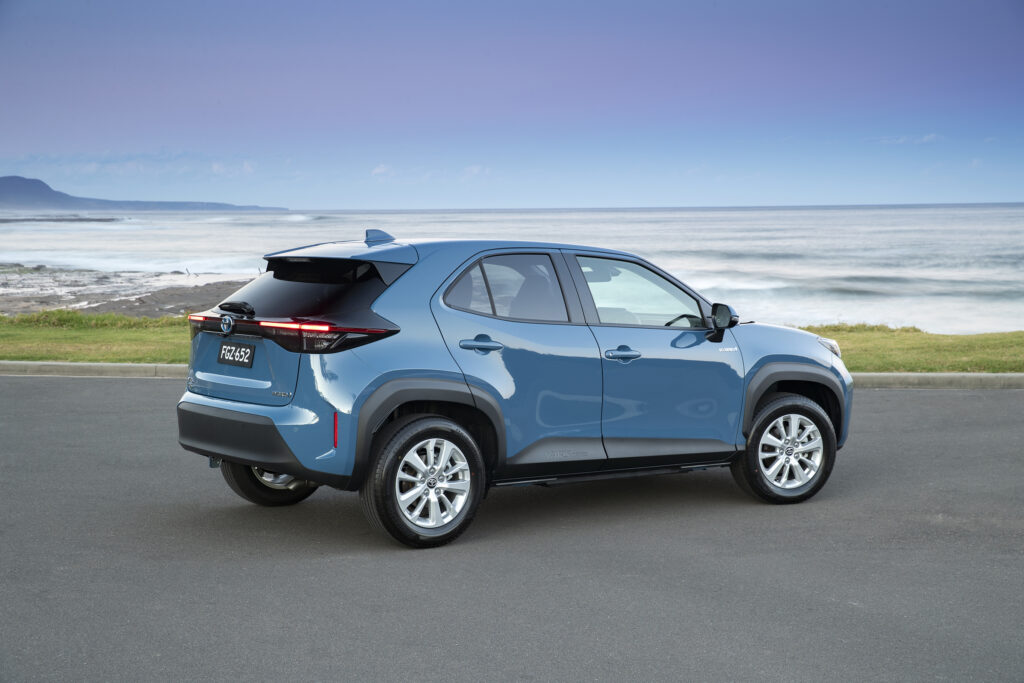
Front-wheel drive models get a space-saver spare tyre, but the AWD models get a repair kit.
The Yaris Cross is also the first Toyota to get Toyota Connected Services, which will roll out on other models over coming years. It included an SOS button and can automatically dial a call centre in the event of a crash, in turn giving vehicle location information. The telematics system can also be used to track the car if it’s stolen.
Toyota Connected Services relies on phone network connectivity and the first three years are included in the price of the car. Toyota can’t say how much it will cost after than initial three years.
The GXL picks up tinted rear windows, satellite-navigation, front and rear parking sensors and blind spot monitoring with rear cross traffic alert.
The Urban replaces the 16-inch wheels of the GX and GXL with snazzier 18-inch alloys. It also gets a head-up display, powered driver’s seat, heated front seats, powered tailgate and seats trimmed in fake leather and tweed.
There are also some interesting and occasionally bold colour choices, including metallic/premium colours for another $500 and two-tones for $450.
A five-year unlimited kilometre warranty applies to the Yaris Cross and that includes the Hybrid’s lithium-ion high-voltage battery pack. If you pay for an annual “Hybrid Health Check” Toyota will extend that battery warranty for another year.
However, if you use the car for commercial use (such as ride sharing) the warranty is limited to 160,000km.
Inside the Yaris Cross
The dashboard and main interior presentation of the Yaris Cross is almost identical to the Yaris. Things such colour and trim changes and the electronic handbrake (the Yaris gets an old school lever) are the main differences.
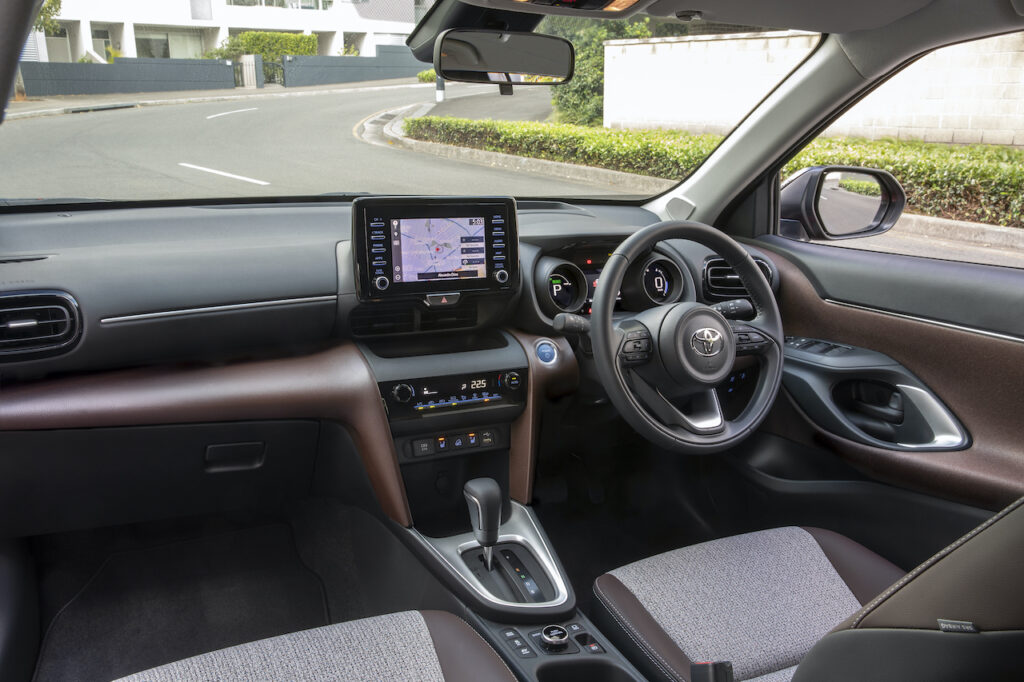
That translates to a basic but functional cabin, one where the driver is presented with a digital instrument cluster.
There’s no covered storage console but binnacles elsewhere and generous door pockets make it easy to find hidey-holes for things.
There’s only one USB outlet on GX and GXL models, although the Urban picks up another one in the dashboard.
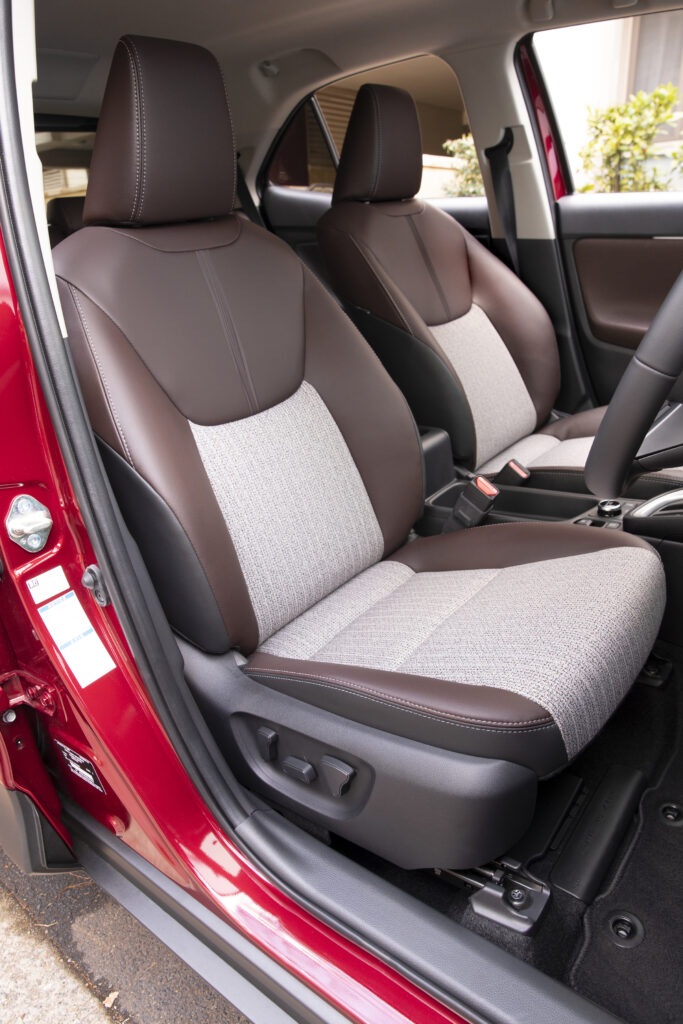
The larger body of the Yaris Cross means reasonably rear seat space, especially for kids. It’s a narrow back seat, so three will need to be smaller humans to fit. Plus knee room won’t suit six-foor-plussers if there’s a larger driver up front. But it’s otherwise well sutied to couples and single-kid families.
The back seat splits in a 40/20/40 configuration and the boot is a useful is stubby 390 litres, or 314L for Hybrid AWD models. The difference comes down to the boot floor. Because the all-paw Hybrid models get an additional electric motor under the boot floor the clever split-folding false floor has been deleted on those.

Performance and efficiency
The regular Yaris Cross gets a 1.5-litre three-cylinder with 88kW and 145Nm.
The Yaris Cross Hybrid gets a lowered-powered version of the same engine; it’s been tuned for fuel efficiency to work with the electric motor. Its outputs are 67kW/120Nm.
The electric motor makes 59kW/141Nm for a combined 85kW. Toyota doesn’t quote a combined torque figure, but you’ll get at least the electric motor’s 141Nm peak.
And that peak kicks in very early, so there’s a nice usable surge the second you step on the accelerator. It’s no fireball, but the Yaris Cross Hybrid builds pace faithfully, even managing a hint of wheelspin on a wet road.
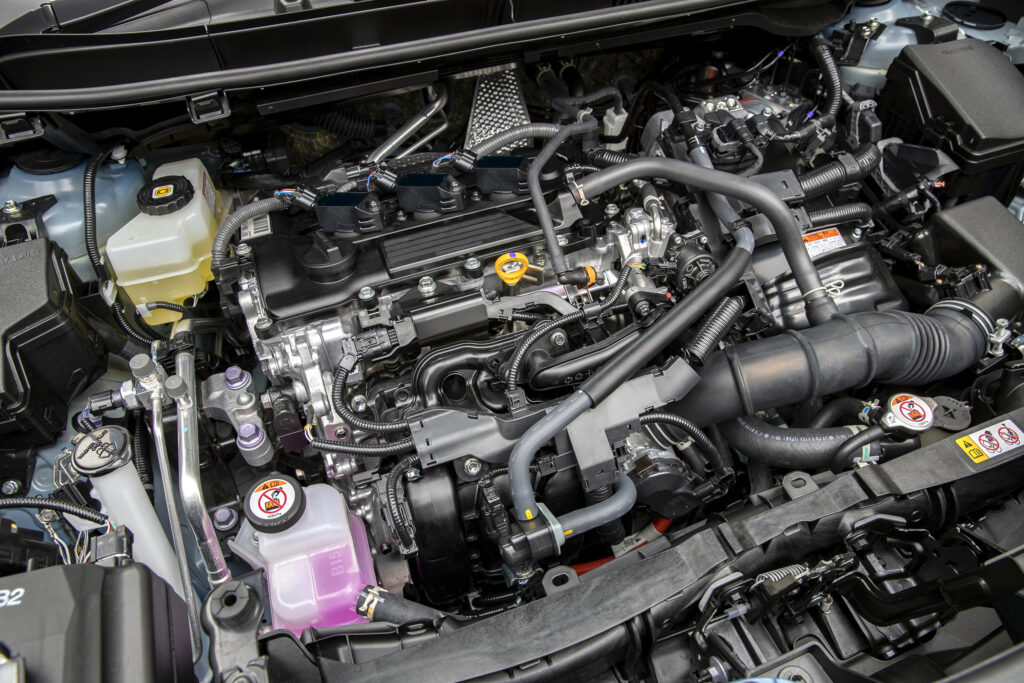
The little three-cylinder adds some aural character, especially if you rev it hard.
Performance is never particularly brisk but it’ll easily sit on the 110km/h freeway limit and zips around town fine.
The all-wheel drive model adds that extra motor in the rear, but performance feels the same. That rear motor is smaller than the one up front, producing just 3.9kW and 52Nm.
There’s no mechanical link between the front and rear drivetrains, with computers instead controlling how much the rear motor produces depending on the conditions.
Toyota says it can send up to 60 percent of the drive rearward, although we’re not quite sure how those numbers add up; it would mean temporarily reducing the torque of the front e-motor to allow the rear to take priority.
Either way, the AWD Yaris Cross Hybrid drives very much like a front-drive Yaris Cross Hybrid. Most of the driving is clearly being done by the front wheels. Even the AWD will occasionally experience some front wheel slip on a slippery surface.
There’s a Trail mode to apply brakes to spinning wheels and also to reinforce that Toyota believes the Yaris Cross can do some sort of off-roading. But think very light duty tracks or snow. And don’t get too adventurous because the Yaris Cross AWD doesn’t have any spare tyre, only a repair kit.
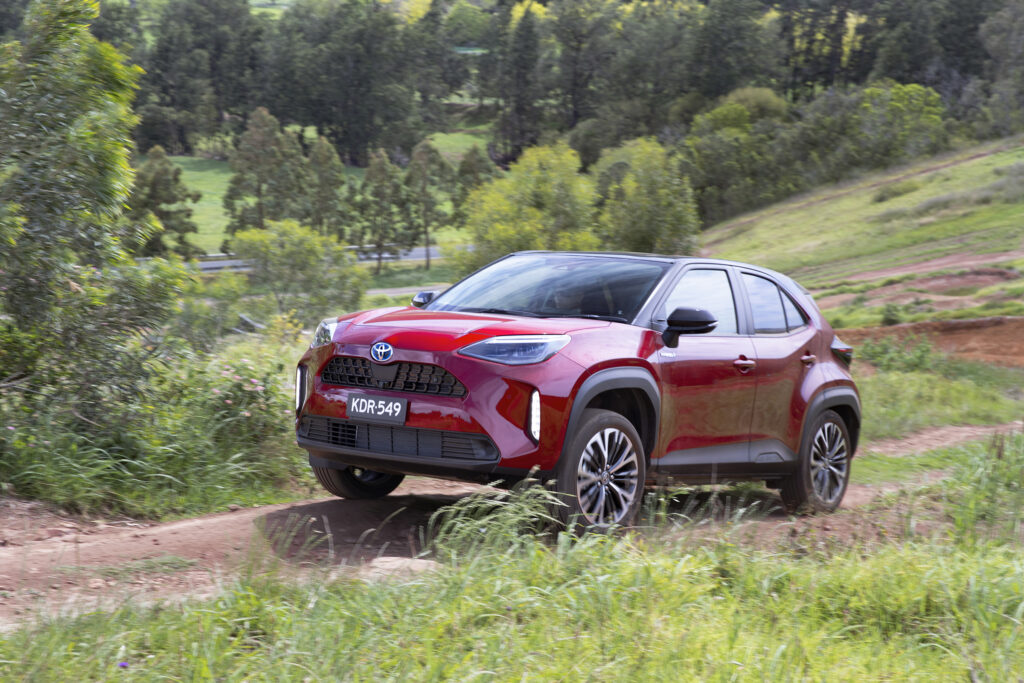
Of course the big appeal with the Yaris Cross Hybrid is fuel use – or how little fuel it uses.
Claimed consumption is 3.8 litres per 100km for the front-drive variants or 4.0L/100km for the all-wheel drive. Impressively, it only needs the cheaper regular unleaded.
We spent more time driving the AWD Hybrid and found it’s consumption hovered around 4.5L/100km in real world driving. Even when you drive it hard or limit it to city driving it won’t use much more than that.
Charging
There is no external charging with the Yaris Cross. Instead all the battery topping-up is done via regenerative braking, which sources all of its energy from petrol.
As for the capacity of the lithium-ion battery (the Yaris Cross is the second Toyota to replace old-school NiMH batteries, behind the regular Yaris), it’s tiny at just 0.76kWh.
You might get a kilometre of very slow running out of it on electricity alone, but the petrol engine will be assisting most of the time you’re accelerating.
Ride and handling
The Yaris Cross rides on the same TNGA architecture as the Yaris, albeit slightly longer to account for the bigger body. It also rides 20mm higher than a Yaris, not only making it easier to get in and out but also providing
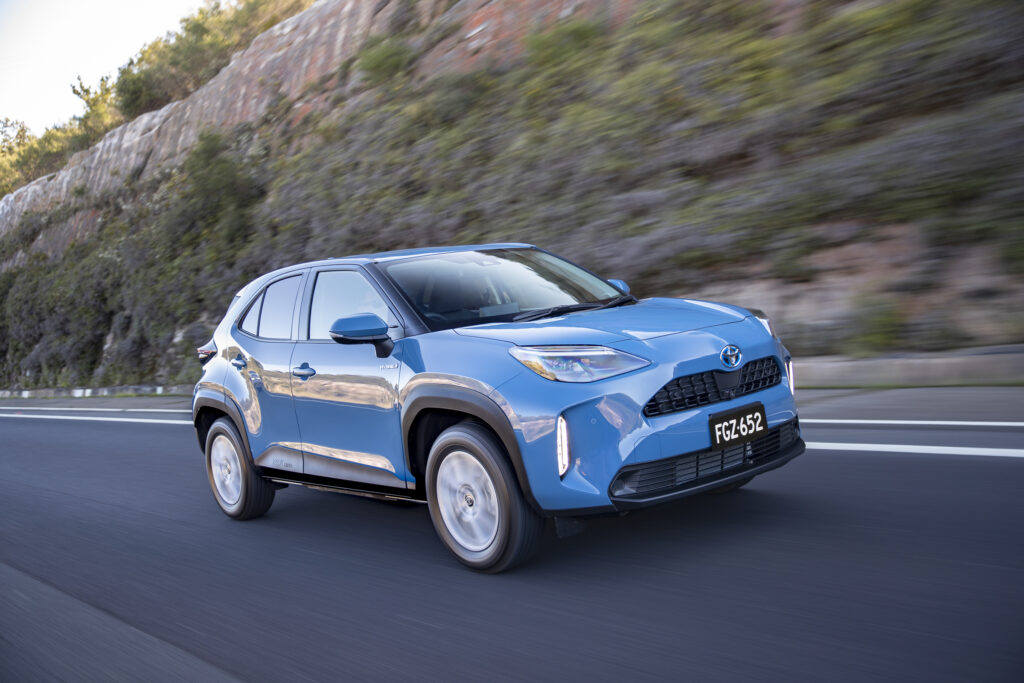
It’s a solid starting point and makes for an agile and responsive machine.
Steering is predictably light but the manners generally good.
The Yaris Cross points assertively and behaves itself mid-corner.
The ride is well controlled and it deals admirably with bumps.
Less impressive is the grip of the 16-inch tyres. They appear to have been chosen more for fuel economy, with wet weather grip below par.
It means you have to tread carefully on a wet bitumen.
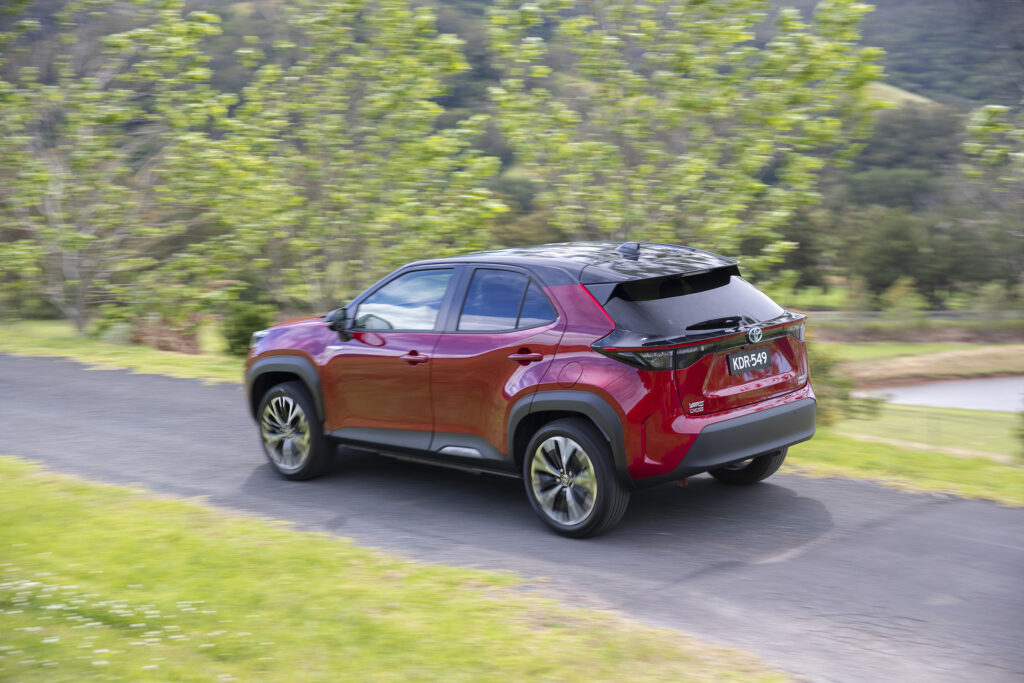
There are electronics to assist if things if you push past the limit, but some additional traction would go a long way to stepping up the overall driving nous.
Noise levels are generally acceptable although country road speeds lead to some noticeable tyre roar from the rear.
Talking point
Toyota Connected Services is something you’ll hear a lot more about over the next few years. The Yaris Cross is the first Toyota to get it in Australia.
It’s a form of telematics that utilises the Telstra mobile phone network to contact a call centre. Toyota had a similar thing back in the early 2000s, but the fleets it was aimed at never really warmed to it.
So, now it’s on to Toyota Connected Services, which has more functionality. As well as Telstra there’s involvement from Japanese telecommunications company KDDI, which is helping with Toyota’s vision of creating connected cars.
Toyota Connected Services includes an SOS button inside that allows quick access to a call centre.
The call centre is automatically contacted if the car is involved in a crash, in turn relaying vehicle location information so emergency services can be deployed.
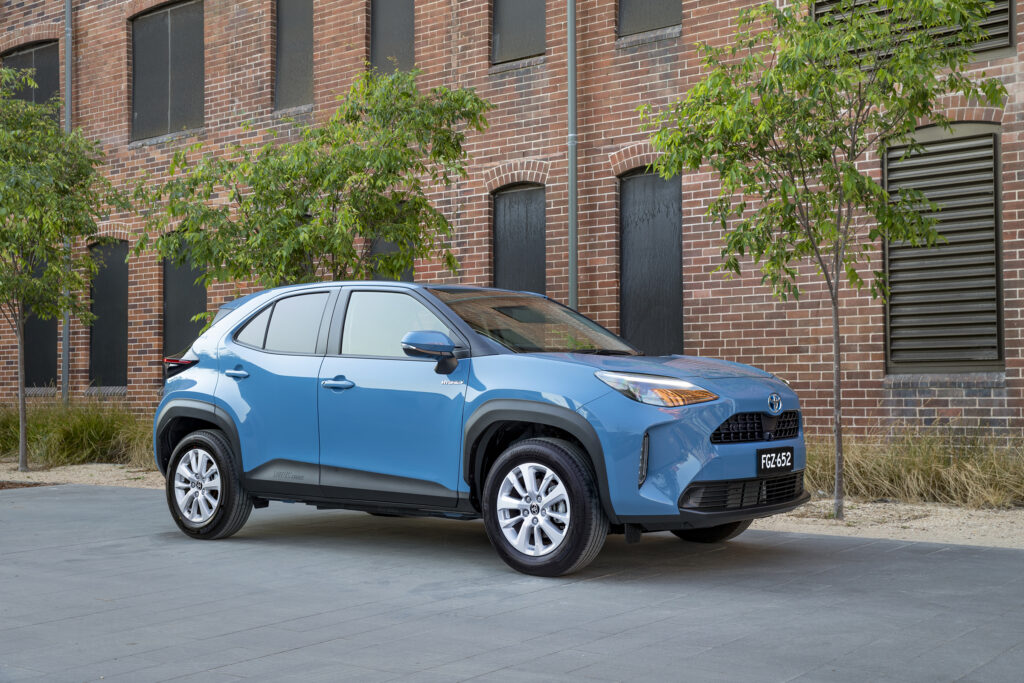
Toyota has thrown its Connected Services in for free for the first three years, but after that it’s expected to cost more as part of a subscription. Toyota can’t yet say how much that subscription will cost.
Safety
Like the Yaris it’s based on, the Yaris Cross has been designed to achieve the maximum five-star ANCAP safety rating although it has not yet been tested.
There are eight airbags, including centre front airbags to prevent a head clash between those up front.
All models come with autonomous emergency braking (AEB) with pedestrian and cyclist detection (the latter only during the day).
There’s also adaptive cruise control that maintains a distance to the car in front.
Like all such systems, the lane departure warning and Lane Trace Assist is borderline useless. We found it better to disengage it.
GXL and Urban models get rear cross traffic alert and blind spot warning, which uses rear-mounted diagonal side radars to look out for other vehicles.
Verdict: Toyota Yaris Cross
The Yaris Cross Hybrid is more convincing than the regular Yaris Hybrid, mainly because the minor improvements (better rear brakes, electric handbrake) and larger body easily justify the $3000 price premium.
Its biggest asset is the availability of a hybrid system, which gives an affordable fuel-saving option and makes the Yaris Cross the most fuel efficient petrol-powered SUV.
Toyota Yaris Cross Hybrid 2WD
Price: $28,990 (GX), $31,990 (GXL), $34,990 (Urban), plus on-road costs
Basics: Hybrid, 5 seats, 5 doors, small SUV, FWD
Range: 0-1km
Battery capacity: 0.76kWh
Battery warranty: 5 years/unlimited km (160,000km for commercial use)
Engine: 1.5-litre 3-cylinder, 67kW/120Nm
Motors: 1 front 59kW/141Nm (85kW combined peak power)
AC charging: NA
DC charging: NA
0-100km/h: NA
Toyota Yaris Cross Hybrid AWD
Price: $31,990 (GX), $34,990 (GXL), $37,990 (Urban), plus on-road costs
Basics: Hybrid, 5 seats, 5 doors, small SUV, FWD
Range: 0-1km
Battery capacity: 0.76kWh
Battery warranty: 5 years/unlimited km (160,000km for commercial use)
Engine: 1.5-litre 3-cylinder, 67kW/120Nm
Motors: 1 front 59kW/141Nm and 1 rear 3.9kW/52Nm (85kW combined peak power)
AC charging: NA
DC charging: NA
0-100km/h: NA

